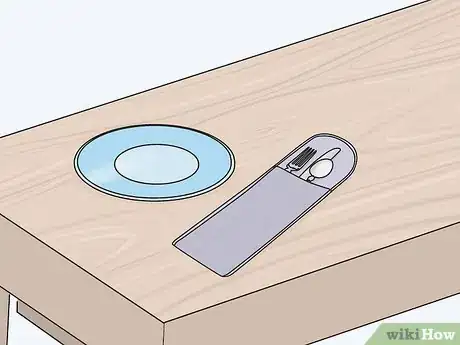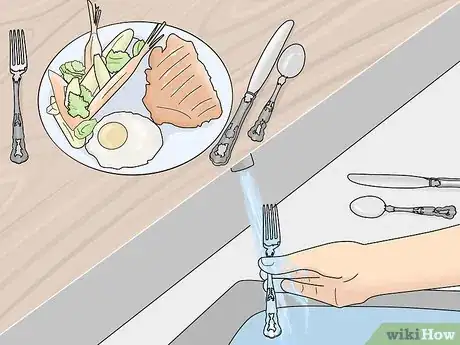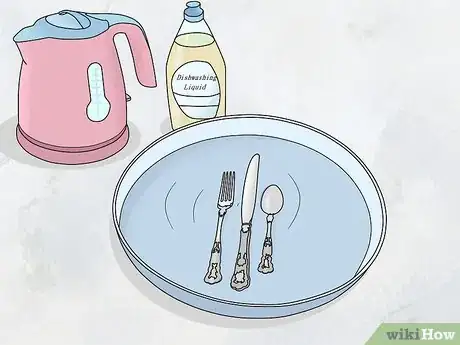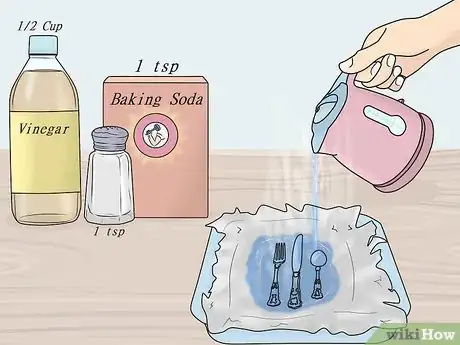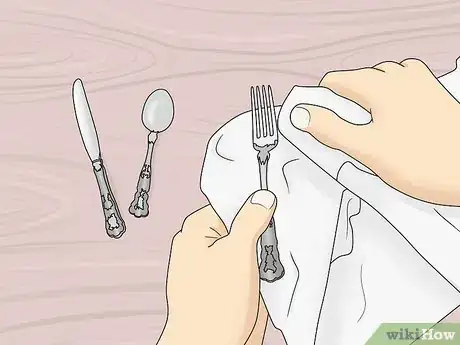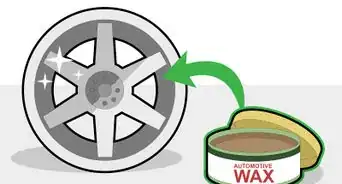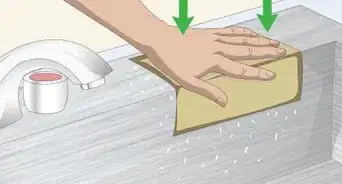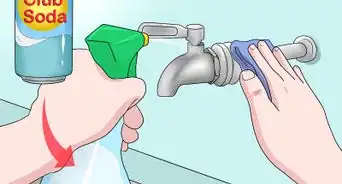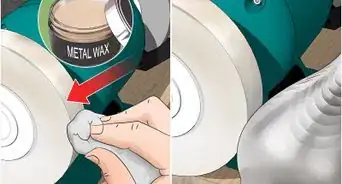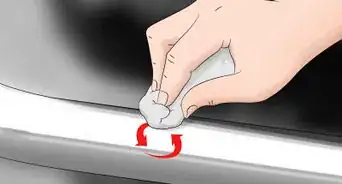This article was co-authored by wikiHow Staff. Our trained team of editors and researchers validate articles for accuracy and comprehensiveness. wikiHow's Content Management Team carefully monitors the work from our editorial staff to ensure that each article is backed by trusted research and meets our high quality standards.
This article has been viewed 54,879 times.
Learn more...
Silver dinnerware and decorative pieces add touches of elegance and beauty wherever they are shown. But silver is bound to tarnish after some period of time, and polishing it can be a chore. Luckily, there are ways to slow the process of tarnishing, meaning your silver stays shiny, and polishing won't be frequently necessary. Proper storage techniques, when combined with regular use and careful washing, will keep your silver gleaming.
Steps
Storing Silver Properly
-
1Keep your silver in a place with low humidity and away from high heat. Humidity and heat both increase the speed at which silver tarnishes. To keep your silverware and silver jewelry shiny and polished, put them into storage in parts of your house that meet these requirements.
- China cabinets are perfect for storing fine dinnerware for this reason as they regulate airflow to keep a consistent temperature and don’t trap in excess moisture.
-
2Store silver in protective bags for extra defense against tarnishing. For silver that won't be on display when not in use, the best thing you can do is place it in a specialty container. The best kind of material for this purpose would be flannel or an anti-tarnish cloth, as these are specially treated to keep the chemicals that cause silver to tarnish from becoming activated.
- If you are placing multiple items made of silver in the same bag, make sure not to overstuff it. You don’t want your silver bumping into other pieces, as this could lead to serious damage.
Advertisement -
3Do not wrap or store silver with materials that commonly lead to tarnishing. There are many common household items that can be harmful to you silver polishes because they either contain chemicals or create environments that lead to tarnishing.
- This includes newspaper or other common wrapping papers. The ink that coats them is acidic and can damage the silver.[1]
- Plastic bags can also lead to tarnishing; these also trap in moisture and prevent ventilation, which is not good.
- Cardboard boxes are not recommended for storage, even if just temporary, because they hold in moisture and don't allow for proper ventilation.
- Don't hold your silverware together with rubber bands. They contain sulfur, which leads to tarnishing.
-
4Take the silver out of storage every once in a while and use it! A great way to prevent tarnish from forming and to show off your silver (what’s the point of having it if it is never seen?) is using it![2] This is because most people will wash their silver after using it, which you should do.
- When using silver dinnerware, make sure to rotate which plates and silverware you use so that all of your silver items are used equally. Otherwise the less-used ones will begin to tarnish.
Washing Your Silver After Use
-
1Clean the silver with warm, soapy water. Do this right after you are done using it, as the oils on your skin or residue from food can begin to chemically react with the silver and damage it.
- Wash your hands before handling the silver. You may also consider wearing cotton gloves.
- Do not put silver in the dishwasher. Though it won’t cause tarnishing, putting silver in a dishwasher can leave marks. Always hand wash with care.
-
2Soak the silver in a hot baking soda bath for an extra polish. Bring a pot of water to a boil. Line another tray with a layer of aluminum foil and fill it with a 1⁄2 cup (120 mL) of white vinegar, 1 teaspoon (4.9 mL) of baking soda, and 1 teaspoon (4.9 mL) of salt. Once the water boils, pour it into the tray. Place your silver into this mixture and leave it for approximately 30 seconds before taking it out. [3]
-
3Dry silver off with a flannel or cotton cloth. Gently rub the surface of the silver in small circles with a soft flannel or cotton towel. Don’t let the silver air dry, as drops of water can cause spotting.[4]
- There are special anti-tarnish cloths available that are treated with chemicals that prevent tarnishing and polish when used to buff.[5] If you want silver that really gleams, this may be a good investment.
Expert Q&A
-
QuestionWhich is better, a hundred percent silver or sterling silver?
 Nicole WegmanNicole Wegman is the Founder and CEO of Ring Concierge, a New York City-based fine jewelry brand. Specializing in engagement ring and wedding band trends, Ring Concierge creates a luxury experience catered towards millennials. Ring Concierge offers engagement rings along with earrings, necklaces, bracelets, and anklets. Nicole's work and Ring Concierge have been featured in Vogue, Glamour, Who What Wear, Martha Stewart Weddings, Brides, and Cosmopolitan. Nicole is a GIA (Gemological Institute of America) Accredited Jewelry Professional and holds a BS in Fiber Science and Apparel Design from Cornell University.
Nicole WegmanNicole Wegman is the Founder and CEO of Ring Concierge, a New York City-based fine jewelry brand. Specializing in engagement ring and wedding band trends, Ring Concierge creates a luxury experience catered towards millennials. Ring Concierge offers engagement rings along with earrings, necklaces, bracelets, and anklets. Nicole's work and Ring Concierge have been featured in Vogue, Glamour, Who What Wear, Martha Stewart Weddings, Brides, and Cosmopolitan. Nicole is a GIA (Gemological Institute of America) Accredited Jewelry Professional and holds a BS in Fiber Science and Apparel Design from Cornell University.
Jewelry Professional & Founder of Ring Concierge Hundred percent silver is very soft, while sterling silver has 7.5 percent of other metals and 92.5 percent silver. It is more sturdy and suitable for making things.
Hundred percent silver is very soft, while sterling silver has 7.5 percent of other metals and 92.5 percent silver. It is more sturdy and suitable for making things.
References
- ↑ https://www.home-storage-solutions-101.com/storing-silver.html
- ↑ http://84thand3rd.com/2013/05/31/8-tips-to-clean-silver-naturally-keep-it-tarnish-free/
- ↑ https://www.epicurious.com/expert-advice/how-to-clean-silver-silverware-servingware-article
- ↑ https://www.southernliving.com/home-garden/solutions/caring-silver
- ↑ https://www.canada.ca/en/conservation-institute/services/conservation-preservation-publications/canadian-conservation-institute-notes/care-silver.html

